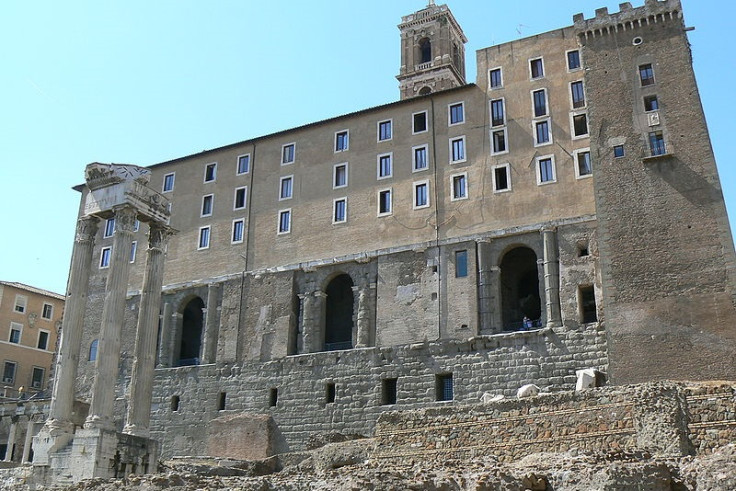Downfall of Roman Republic Caused by Concrete?

The Roman Republic fell because of the use of concrete as a building material, a leading academic has claimed.
Dr Penelope Davies, a historian with the University of Texas believes that the rise of concrete as a building material may have weakened ancient Rome's entire political system as Consul Pompey and Julius Caesar began "thinking like kings".
Concrete was used to build many of Rome's finest monuments, such as the Pantheon, the Colosseum and the Tabularium, which have stood the test of time and are still standing today.
The ancient Romans discovered how to make concrete, which they called "pulvis puteolanus", in the 2<sup>nd century BC. They made it by mixing lime with volcanic rock and sand from the Bay of Naples.
It was cheap to produce and architects believed that the material had the ability to weather thousands of years of rain and thus stand as testaments to the glory of Rome long into the future.

Pompey, a general and consul, was Julius Caesar's main rival for the leadership of the Roman Republic. It was their rivalry that led to a civil war and helped usher in the Roman Empire.
Pompey sought to assert his authority over the city of Rome by building its very first permanent theatre, in 55BC.
"He wanted to be the person that everyone turns to in Rome – the person whose advice everybody seeks, the father of the city," Davies told the Times.
Caesar retaliated by building a new forum and redeveloping an old building called the Ovile to become the Saepta Julia, a building where citizens could gather to cast votes.
After he took power as dictator in 48BC, Caesar continued to use concrete to help the city expand, starting large-scale building projects that provided work for the poor, such as changing the course of the River Tiber, building the first two bridges across the Rhine, and constructing the new harbour at Ostia and a new canal from Tarracina.
"What [Caesar] was counting on was concrete," said Davies.
"One could even say that it played a significant role in bringing down the republic."
The Roman Empire, which followed the republic and continued for more than 400 years, was widely believed by academics to have collapsed in AD476 because of lead poisoning in the drinking water, which led to widespread health problems including anaemia, gout and low birth rates.
Researchers in France have published a study, "Lead in ancient Rome's city waters", in the PNAS journal, which disputes the commonly held view. They said that the amount of lead in the water was not enough to cause the downfall of an entire civilisation.
"It's marginal," said Francis Albarède, who led the study at Claude Bernard University in Lyon.
"Even though they probably did not get degenerate, as some people say, or even get more violent, lead pollution might have been something to be concerned about."
© Copyright IBTimes 2025. All rights reserved.






















